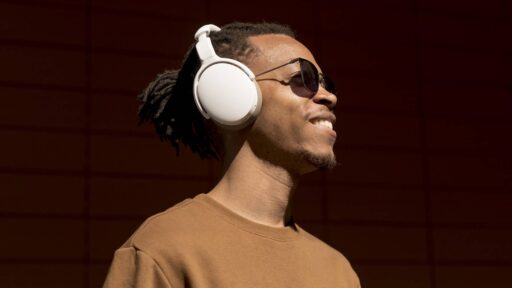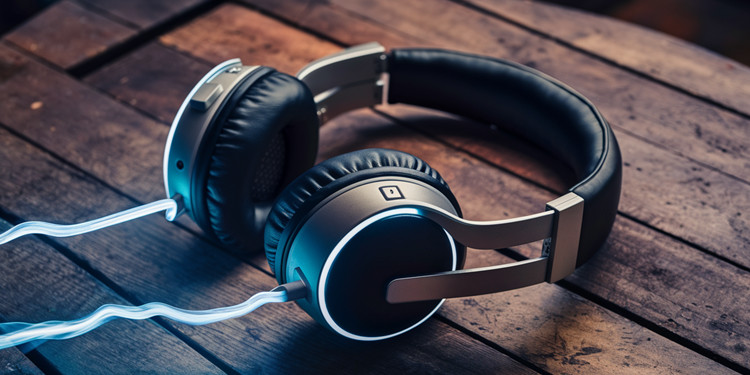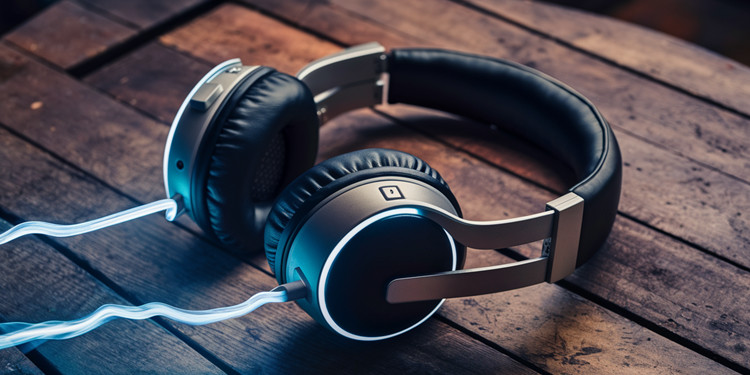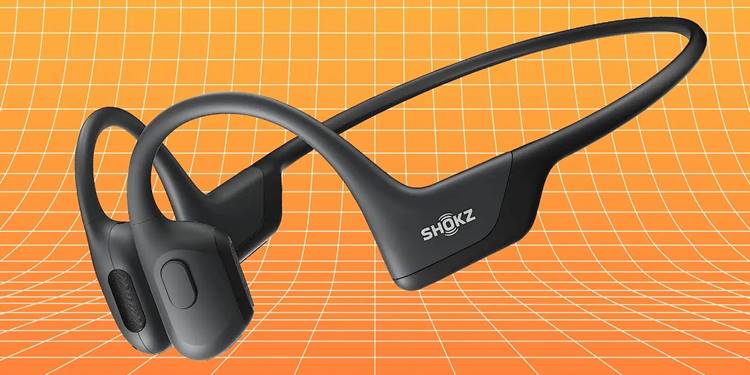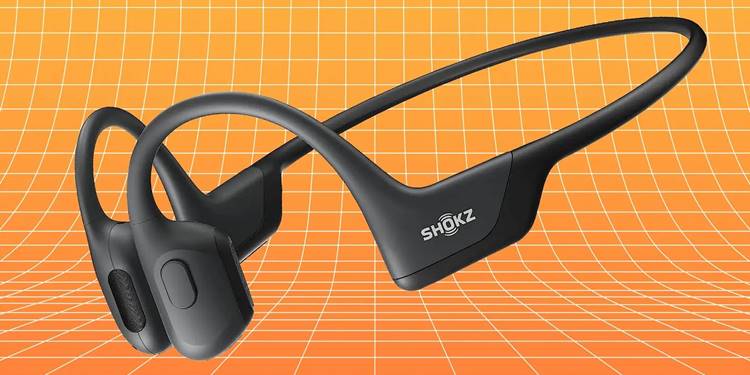Welcome to our extensive bookshelf speakers review for 2019.
We have put together detailed background information and added a summary of customer reviews from the internet.
We want to make your purchase decision easier and help you find the best bookshelf speakers for you.
Also, is a detailed guide to provide answers to your frequently asked questions. Wherever available is a useful video to bring home our detailed explanations.
Furthermore, you will also find on this page important information that you should pay attention to if you want to buy bookshelf speakers.
Bookshelf Speakers Essentials in Brief
- Bookshelf speakers require much less space and are cheaper than comparable tower speakers or surround systems.
- Basically, a distinction is made between passive and active shelf boxes. The design can influence sound and gain.
- Passive bookshelf speakers require an external amplifier. Active models have pre-installed such a device and often bring additional features such as Bluetooth.
Best Bookshelf Speaker: The Ranking
1st place: Edifier Studio R1280DB Bluetooth speaker system
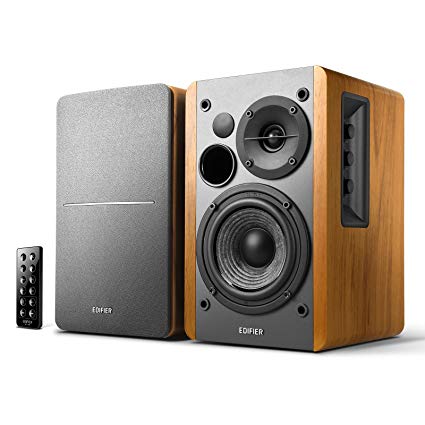

The Edifier Studio R1280DB Bluetooth speaker system consists of two relatively compact bookshelf speakers in classic wood decor. Numerous connectivity options and enough power make this box system a worthwhile investment.
Currently, around 85% of all reviewers on the Internet rate Edifier’s Studio R1280DB Bluetooth speaker system positively.
The following points are particularly positively highlighted:
- The very good sound of the speakers
- The high-quality workmanship
- The relatively cheap price
- The compact dimensions
All in all, these Bluetooth bookshelf speakers stand out in particular because of the very pleasant and powerful sound for the small dimensions and the relatively low price.
2nd place: Magnat Monitor Supreme 200 bookshelf speaker


The Magnat Monitor Supreme 200 bookshelf speaker is a very good entry-level box that delivers good workmanship and powerful bass for a low price.
Currently, the bookshelf speaker is judged by 94% of all reviewers with a positive rating.
Especially praised are:
- The good price-performance ratio
- The good workmanship
- Powerful bass
At this point, we would like to emphasize the powerful bass, which is rather rare especially for bookshelf speakers of the entry-level price range.
3rd place: Nubert nuBox 313 bookshelf speaker
The Nubert nuBox 313 bookshelf speaker belongs to the upper class of bookshelf speakers and is aimed at audiophiles with limited space. It offers a homogeneous sound and an unusually level bass.
At present, the bookshelf speaker is rated positively by 95% of the reviewers.
Especially praised is:
- The sound superior to shelf boxes
- The high-quality workmanship
We want to emphasize the sound here again. Due to the high unit price, the nuBox313 belongs to the upper class of bookshelf speakers. But this is also reflected in the excellent sound, which is rarely found in this speaker size.
4th place: Teufel Ultima 20 Mk2 bookshelf speaker
The Teufel Ultima 20 Mk2 bookshelf speaker is a solid mid-range speaker whose strengths lie in the bass range. If you mainly listen to bass-heavy music, the boxes are a good choice.
Currently, the bookshelf speaker is rated positively by 85% of the reviewers.
Especially emphasized are:
- The good price-performance ratio
- The rich and clear sound
- The easy handling
Here we want to emphasize the rich and clear sound that exists at both high and low volumes. A sound range so described is not so often found in bookshelf speakers in the middle class.
Guides: What to know before Buying a Bookshelf Speaker
Bookshelf Speaker – What is it?
It can be confusing to read about bookshelf speakers everywhere. One quickly wonders what is so special about a bookshelf speaker, and whether there is more behind the term than you first assume.
A bookshelf speaker is nothing more than a speaker that can be placed on the shelf. This designation only emerged to distinguish these speakers from the so-called floor standing speakers.
Floor standing loudspeakers are loudspeaker pillars placed on the floor. They are usually high priced (and better) than bookshelf speakers – but also claim significantly more space in the room.
This definition makes it clear that you do not necessarily have to place the so-called bookshelves in a bookshelf: in particular, the mounting on tripods leads to a better sound, because the bass is not “dammed” and the sound is clearer. However, this can have optical disadvantages.


Loudspeakers are transducers that convert a (mostly electrical) input signal into mechanical vibrations, perceived as sound.
Shelf speaker vs. Tower speaker?
Shelf speakers have a height of up to a maximum of 50 cm. Floor loudspeakers, however, usually only start at a height of 90 cm.
The larger case also allows for more sound volume. But those who have little space and still want good sound should get the bookshelf speakers.
In summary, bookshelf speakers offer you the following notable advantages over floor standing speakers:
- Cheaper price
- Take less space
Bookshelf speakers are, as the name suggests, optimized for placement on the shelf, or for wall-mounted installation. They are not as intrusive as floor standing speakers or a surround system and are well suited for smaller living rooms.
Because of the cheaper housing production shelf boxes usually, cost significantly less than comparable floor speakers. The packaging unit almost always consists of two pieces.
However, one cannot say that tower speakers automatically sound better than bookshelves. For a truly significant point in sound quality is the space in which the speakers are placed.
Imagine installing expensive speakers in your bathroom no matter how good the speakers really are, the room shapes the sound in such a way that you cannot savor the quality of your speakers.
You only get a very good sound if you also acoustically optimize your room.
If the acoustics of your room is reasonably appropriate, in most cases tower speakers will have some design-related advantages.
Finally, the appearance of floor-standing speakers is usually very appealing but also cost more.
Should I Acoustically Optimize my Room?
Let’s say you plan to buy bookshelf speakers and you have a budget of $ 400. What should you do?
- a) buy the $400 pair of speakers.
- b) spend only $300 and use $100 for acoustic optimization
The answer is: In most cases, however, option (b) is preferred, though not in all cases.
Because the room shapes the sound. Any frequency reproduced by the speaker is either amplified or weakened by the reverberation of the room. The situation is optimal if the room neither amplifies nor weakens, but only adds a pleasant reverberation to the sound.
And at this point, there is in most cases increased potential for improvement. But how do you optimize your room acoustically, how do you prevent certain frequencies, for example, from being amplified?
The easiest way to do this is with acoustic absorbers. You can hang them like pictures in your room or build them like pillars in the corners (so-called bass traps).
Acoustic absorbers can either be bought ready or you build them yourself. For this, the following video is recommended to you:
Are there wall mounts for bookshelf speakers?
Good news: There are wall mounts for bookshelf speakers. However, you should make sure before you buy that they are compatible with your selected pair of speakers. Wall brackets are not recommended for large and heavy speakers.
This has another reason for the obvious balance problems: If you attach your speakers very close to the wall, the bass range is disproportionately reflected by reflection on the walls.
You can avoid these negative tonal consequences if you leave some room between the back of the speaker and the wall or even attach sound-absorbing material in between them (for example, rock wool or the more expensive Basotect).
Is it Possible to Operate a Bookshelf Speaker without a Subwoofer?
Yes, that is possible and, in many cases, even recommended.
A subwoofer is designed to reproduce extremely low frequencies that a normal speaker cannot or only very quietly generate. You should be aware of a few things when thinking about purchasing a subwoofer:
- Deep frequencies are incredibly difficult to insulate, that is, the deep rumble of your subwoofer will be heard by your neighbors
- Deep frequencies are only fun if they do not sound muddy but clearly separated. This can only be achieved by comprehensive acoustic optimization of the room. It should be worked with a lot of insulating material above all.
Are there (very) Small Bookshelf Speakers?
There are bookshelf speakers in various sizes, including very small models that can easily be placed even in very small gaps. But remember: if you want to connect your bookshelf speakers to the TV, for example, check whether the new, small speakers are better than those already built into your TV.
In general, it is advisable to plan a little space for the speakers, because the larger a loudspeaker is, the higher the reproducible frequency spectrum.
Bookshelf speakers are particularly suitable for people who have little space and money but want a good sound system. Well suited for students (parties).
Which Wireless Bookshelf Speakers are Available?
Wireless sound can be transmitted through various technologies. Today there are loudspeakers that work by radio, WLAN or Bluetooth. Wireless bookshelf speakers usually have Bluetooth.
You will also find wireless shelf boxes in the upper entry-level price range. Often these are active speakers that have already integrated an amplifier.
Wireless does not necessarily mean that no cables are needed at all. A pair of bookshelf speakers require a connection cable and a power supply.
What do Bookshelf Speakers Cost?
Bookshelf speakers are available in many price ranges – from the very affordable device for hi-fi purists to the high-end box, for which sometimes even a four-figure amount is possible. These prices are in our opinion very well worth it, if you hear a lot of music and you want an authentic and lossless sound is important.
Excellently designed devices from unpopular manufacturers start from about 50 dollars. The price range for HiFi beginners then extends to about 150 dollars. From 150 Dollars to about 300 Dollars we are in the middle class. There you will find more solid and technically mature devices.
| price range | Euro |
| beginner | about 50 – 150 |
| middle class | about 150 – 300 |
| upper class | from about 300 |
Bookshelf speakers of the upper class will start at about $300.
For high-end devices, you can also spend four-digit amounts. These are worthwhile only with acoustically optimized rooms.
Where can I Buy Bookshelf Speakers?
You can buy bookshelf speakers in well-stocked hi-fi shops and electronics stores as well as in many department stores and larger supermarkets. Shelf speakers have also been selling more and more over the internet in recent years. Of course, the choice is much bigger, and the prices are often lower.
According to our research, most shelf speakers in the USA are currently being sold on the Internet via the following shops:
- Amazon.com
- Bestbuy.com
All bookshelf speakers presented here are provided with a link to at least one of these shops. Then you can strike immediately if you have found a suitable device.
What Types of Bookshelf Speakers are there, and which one is Right for You?
Those who opt for shelf speakers from a variety of possible speaker variants (stand speakers, desktop speakers, compact speakers) probably do so because this variant is not only more discreet compared to the larger models but also cheaper.
Compared to the smaller models, these speakers also offer a better volume of sound.
It should be noted briefly, however, that the advantages are particularly evident when the sound is in a smaller room. Anyone who has progressed so far with their purchase decision for these reasons can, in a further step, decide between three different versions of the shelf reader:
- Passive shelf speakers
- Active shelf speakers
- Active-passive shelf speakers
Active-passive speakers as related sets comply with the rule. Most speakers in a price range of 100 to 200 Dollars are mostly this type. However, it does not hurt to know in advance to avoid any additional costs.
For example, those who already have an amplifier can get away with a cheaper passive shelf speaker yet with some advantages. Keep in mind the device playing the music is also worthy of consideration.
The benefits and disadvantages listed below can help with decision-making.
How does a Passive Loudspeaker Work and what are its Advantages and Disadvantages?
A passive loudspeaker, in contrast to an active loudspeaker, requires an amplifier. It cannot be easily connected to the playback device directly to play music. If you don’t have an amplifier you need to put into consideration the extra cost.
Advantages
- flexibility
- Sound can be optimized
- Bi-wiring and double stereo possible
Disadvantage
- Mostly no Bluetooth
- Additional costs due to amplifiers
However, these additional costs should be expected for hi-fi fans and people with fine-tuned hearing. Because with the appropriate technical know-how, the sound can be optimized exactly as desired.
If you are quite familiar with technology or know someone who can work it out for you, you are at an advantage.
How does an Active Speaker Work and what are its Advantages and Disadvantages?
An active speaker can be easily connected to the source device to play directly, unlike the passive speaker that require an amplifier.
Advantages
- easy installation
- Bluetooth possible
- Wireless possible.
Disadvantage
- Lower sound quality
There is no need to introduce an amplifier here. While the passive loudspeaker allows for better fine tuning, the audible differences in a bookshelf loudspeaker are less likely to fall, as for example a home theater system.
How does an Active-Passive Loudspeaker Work and what are its Advantages and Disadvantages?
A combination of active and passive loudspeakers is not so much an exception as it is the norm. In most cases, an active speaker is sold with passive speakers, making another amplifier unnecessary.
advantages
- Easy installation
- Good sound
- Bluetooth possible
disadvantage
- Relatively expensive
Since this combination is coordinated with each other, fine tuning is also omitted here. So, from this version, anyone who wants an appealing sound for little effort can proceed.
Purchase Criteria: How to Rate and Compare Bookshelf Speakers
We would like to show you the factors by which you can compare and rate bookshelf speakers. This will make it easier for you to decide which device is right for you and which one is not.
In summary, these are:
- Reinforcement
- Assembly
- Nominal load capacity and overall performance
- Impedance
- Frequency range
- Efficiency
- Dimensions
- Colour
In the following, you can read what the individual purchase criteria are and how to classify them.
A high-quality housing is the alpha and omega. That allows for great sound. Self-resonance of plastic housings would adversely affect the sound.
Reinforcement
In the case of amplification, a distinction is made between active and passive loudspeakers. If you already have an amplifier or you want to buy one, passive bookshelf speakers are the right choice for you.
But if you can do without an external amplifier, an active shelf speaker is an interesting alternative for you. These often bring along wireless transmission options such as Bluetooth.
Active speakers are recommended if you want to simplify your purchase decision and the absolute control over sonic nuances is not so important.
Assembly
For speakers, the individual frequency ranges are distributed over a built-in crossover network on different chassis. The chassis of the speakers are installed in a housing.
Bookshelf speakers are usually a 2-way variant. There, in most cases, a tweeter and a combined midrange and woofers are used.
Nominal Load Capacity and Overall Performance
Rated load capacity and overall performance represent the load capacity of bookshelf speakers and are not performance data.
The nominal power rating indicates which electrical power the loudspeaker can cope with in continuous operation without being damaged. The total or music performance, however, describes the short-term resilience and is usually much higher.
Both values should be compared with the power specifications of your amplifier.
Impedance
A music signal consists of different frequencies, which are distributed by the amplifier to the respective bookshelf speakers. The impedance describes the electrical resistance to a signal and is measured in ohms.
In the case of shelf speakers, the impedance indicates how much the box loads the amplifier in relation to its output impedance.
When choosing your bookshelf speakers, you should tune the values to those of your amp. If you combine different values, it can lead to quality losses, which usually affect the volume.
Frequency Range
The frequency range indicates from which lowest audio frequency up to which highest audio frequency a loudspeaker can reproduce audible sounds. The human hearing range is approximately 20 to 20,000 Hertz.
Depending on the intended use, the loudspeakers are determined according to volume, the frequency range or the available space.
Efficiency
The efficiency of a loudspeaker is very relevant for the achievable maximum volume. It shows the relationship with which speakers convert electrical power into acoustic power. The higher the value, the more efficient a transducer will be.
Dimensions
Bookshelf speakers are a maximum of 50 cm high. On average, the height is between 20 and 30 cm. They are very compact and can almost disappear optically in the living room shelf. Bookshelves are often the right choice, especially for smaller rooms.
Colour
Since bookshelf speakers do not immediately catch the eye, color plays a minor role. Most products are available in black. If you are looking for a different shade, sometimes white or wood look is offered.
TRIVIA: Facts Worth knowing about Bookshelf Speakers
How to properly set up bookshelf speakers?
Bookshelf speakers require little space due to their small dimensions and are very flexible. Nevertheless, you should follow some rules for an optimal sound experience.
Ideally, the listener with the bookshelf speakers forms an equilateral triangle, the so-called stereo triangle. This triangle has three equals 60-degree angles.
The speakers should also be positioned on the shelf so that the tweeters are at ear level. It can greatly help to acoustically optimize your space, for example by attaching acoustically absorbent materials such as rock wool or Basotect.
Before you do this, it usually makes sense to test your room, so to see how your room responds to frequencies. You can do this with software like “RoomEQWizard” (free) and a measuring microphone.
However, such a complex procedure is only possible if you can perceive the different nuances in the sound for acoustic optimization of a room can be a very complicated topic.






